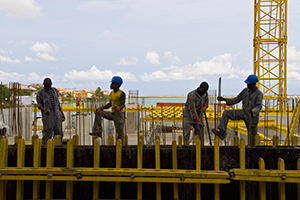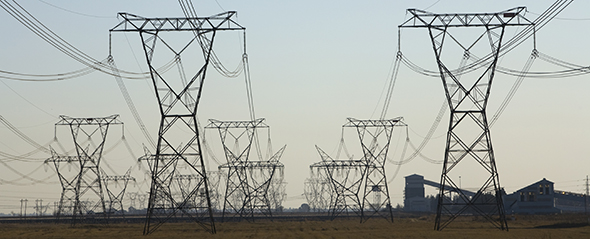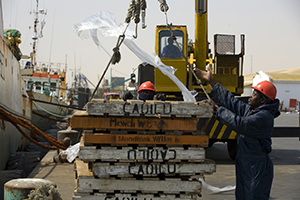Research Brief
Aid and Structural Change in Africa
A New Agenda
It is commonly acknowledged that developing economies are characterized by large differences in output per worker across sectors. For such economies the shift of resources from low productivity to high productivity is the key potential driver of economic growth. Nearly all developing countries that have transformed themselves from low to middle and upper income status have undergone profound changes in their economic structure.

Such change is critical for Africa. The growth experienced in the region between 1995 and 2008 was due mainly to high commodity prices and the recovery of domestic demand, not by a profound change in economic structure. Africa needs more high-value added activities to create good jobs and sustain this growth. The private sector must be a central actor in such a change. In the UNU-WIDER working paper 'Aid, Structural Change, and the Private Sector in Africa', John Page argues that foreign aid has been partly responsible for this lack of structural change. Aid aimed at improving the investment climate has neglected to address two critical constraints, infrastructure and skills, and has instead focused on low impact regulatory reforms. Page goes on to suggest a new agenda for aid aimed at catalyzing private investment for structural change.
Aid and the investment climate
Roughly one quarter of official development aid to Africa, around 21 billion US dollars, is aimed at supporting improvements in the investment climate. Since the 1990s donor focus in this area has centered on changes in trade, regulatory, and labour market policies, designed to reduce the role of government with regards to economic management. This has in part been driven by the World Bank International Finance Corporation Doing Business survey. Seven of the nine indicators used by the survey presume that lessening of regulation is always desirable.
As much donor investment is driven by this survey it is important to question whether it adequately identifies the constraints to private investment, structural change, and growth in Africa. The answer, according to Page, is no.
This is the case for two reasons. First the surveys are not designed to be used as country level diagnostic tools, but rather as a tool for cross country comparisons. Consequently Doing Business does not adequately capture country context and fails to identify country level priorities. Second, and perhaps more importantly, the survey restricts itself to only the regulatory aspects of the investment climate. Non-regulatory investment climate constraints are responsible for much of the differences in costs and competitiveness between Africa and other developing parts of the world, and consequently should be an important consideration when distributing aid.
The main non-regulatory constraints to the investment climate in Africa are, according to Page, infrastructure and skills. Donor focus on infrastructure has waned due to a naïve belief in the ability of the private sector to finance improvements in this area. Furthermore, while the continent’s poor electricity infrastructure may well be the single greatest constraint on individual private investment, development aid has neglected the problem in favour of financing public goods such as roads and water supply, which are seen to be more aligned with the Millennium Development Goals (MDGs).

In the case of skills the pursuit of the primary education MDG has crowded out donor expenditure on post-primary education. There is an estimated US$3.4 billion a year shortfall in funding for post-basic education, and this funding gap is unlikely to be filled due to the rising unit cost of primary education and the increased demand for secondary education.
A new agenda for aid – investing in structural change of African economies
Page highlights four interrelated strategic objectives critical to Africa’s ability to accelerate structural change;
- Pushing non-traditional exports – for the vast majority of countries in Africa the export market represents the only option for rapid growth in manufacturing, agro-industry and high-value added services.
- Strengthening agglomerations – a large empirical literature has documented the significant productivity boost that concentrated areas of industry provide.
- Attracting and building human capabilities – in most industries productivity and quality depend on the 'tacit knowledge' and 'working practices' of the workforce.
- Supporting regional intervention – poor infrastructure in neighboring countries, incoherent customs and transport regulations, and inefficient customs procedures and 'informal' taxes significantly raise export costs.
If the international community wishes to help bring about structural change in Africa then it is these goals they must aim to support.
Page goes on to suggests two fronts on which donors could act to support export growth from Africa. First donors can provide aid aimed at improving trade logistics. This can be achieved through an expansion of existing ‘Aid for Trade’ budgets. Aid for trade comprises all investments in transport, energy and communication infrastructure as well as more general assistance aimed at improving the business climate. Currently aid for trade comprises about 25 per cent of overall development assistance. Given this large share, future increases of ‘Aid for Trade’ funding are likely to occur only if the overall envelope for concessional aid expands.
Second policies to increase preferential market access for developing African countries could be introduced. Reducing tariffs on Africa’s commodity exports is one step that could be taken to achieve this. Simplifying and unifying the mechanisms by which African non-traditional exports are given preferential treatment by markets would improve their effectiveness.
Agglomeration can be encouraged through the creation of special economic zones which. A combination of quality investment in institutions, social services, and infrastructure in a limited physical area, encourages firms to cluster together. Such zones have performed very well in non-African countries but to date they have been largely unsuccessful in Africa as they have not crossed the threshold after which productivity gains are realized. If Africa is to achieve sustainable structural change then bringing the performance of these zones up to international standards is of critical importance.

The main channel by which capabilities are transferred to low-income countries is through foreign direct investment (FDI). This limits the scope for direct development assistance to support capabilities transfer. Instead donors can aim to encourage reforms which will make it easier for recipient countries to attract FDI. This should include promoting investment climate reform and supporting the development of effective foreign investment promotion agencies at country level. Donors can also support the development of knowledge networks to “import” global best practices.
The small size of Africa's economies, and the fact that many are landlocked, makes regional approaches to infrastructure imperative. However aid agencies are often better structured and equipped to deal with national partners than regional organizations. If donors wish to help bring about improvements in this area they need to strengthen and harmonize their support for regional strategies and engage in dialogue with regional economic communities.
Page concludes that if foreign aid is to be effective in improving the investment climate, then donors need to focus on helping to overcome Africa's growing skills and infrastructure deficits. Beyond this, aid can play a catalytic role in accelerating structural change by supporting the four interrelated strategic objectives; promoting non-traditional exports, supporting agglomerations, building firm capabilities, and accelerating regional integration.
 Join the network
Join the network